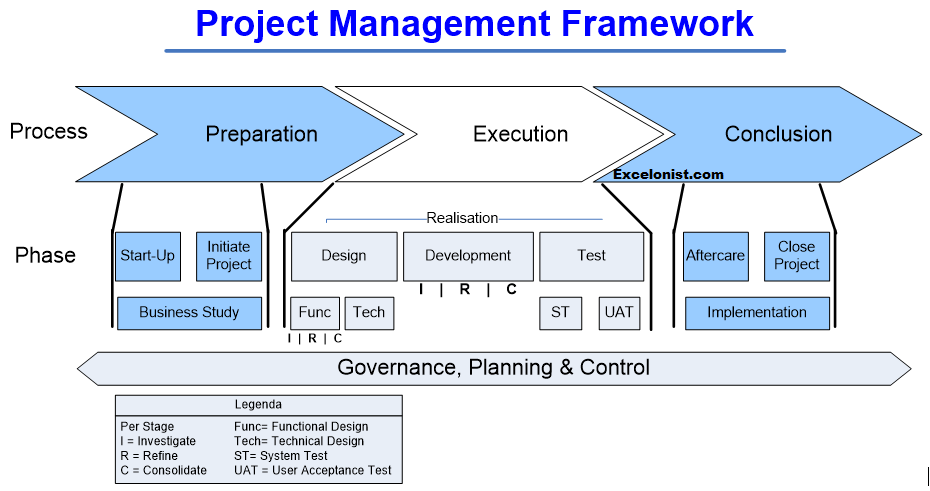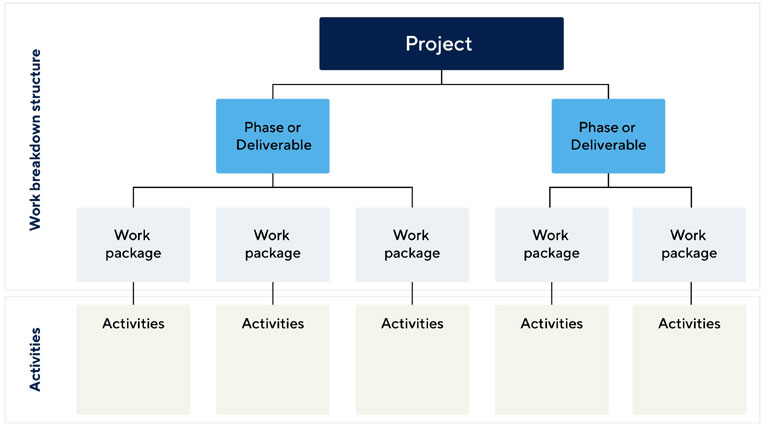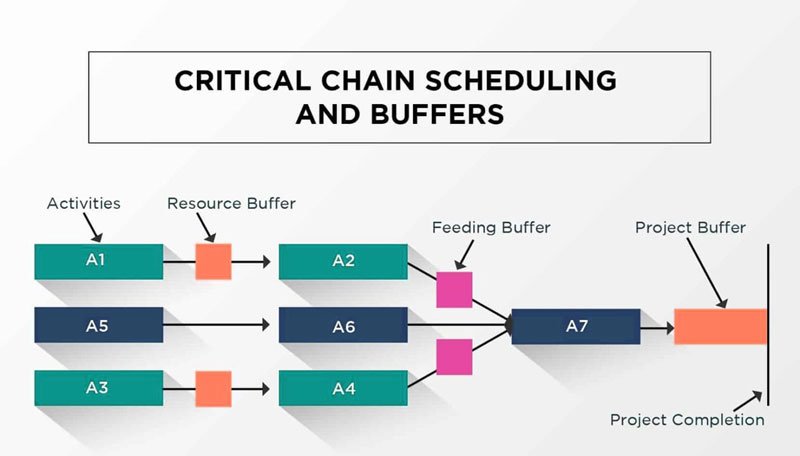A project management framework defines the processes related to development, tasks, and tools utilized to initiate and accomplish a project. It encloses the necessary parts for planning, handling, and executing projects. It can assist your management team to track problems and due dates and also make them alert to deal with future challenges.
Thank you for reading this post, don't forget to subscribe!What is a Project Management Framework?
A project framework is a collection of processes, templates, tools, and activities that are utilized to plan, control, and start and end a project.
It highlights the path you should adopt to keep your project right on track, assist your team members to cooperate better and enhance the probability of project success.
What should a Project Management Framework Include?
A framework for managing projects can be a very helpful tool for project managers and employees as it allows them to learn and use best practices for executing a project. When the framework is available, the team handling the project becomes more cautious about the upcoming challenges in a project.

There are some advantages of management frameworks are discussed below:
Consistency: When a project management framework is available, processes become more consistent stabilizing the atmosphere of the organization.
Clarity: A framework provides a clear picture of the situation that lays out all the activities of the project along with the tools required to accomplish them. It means that the team will not be confused at any stage while executing the project.
Simplification: As bigger projects are divided into smaller tasks, it becomes quite easier to handle them for project managers and the entire team easily handles the workload.
Optimization: A project management framework can assist managers to figure out the amount of time and cost invested in each task within the project. This helps them to optimize and allocate resources for future projects.
Communication: Having regular meetings arranged as organized by the management framework, project managers can communicate very efficiently with other members and enhance the flow of information.
Elements Of Project Management Framework Template
There are three parts of a project management framework:
PROJECT LIFE CYCLE
The life cycle includes all the phases the project undergoes through its entire life:
- Initiation: That is the moment where you describe the cause of the project. You can highlight the objectives and goals in a project charter and figure out any potential issues and risks.
- Planning: This phase includes the list of all the tasks and events of the project in a comprehensive roadmap. Estimate the time duration for every step, establish deadlines and also keep a record of employees responsible for their respective jobs.
- Execution: This step deals with the execution of your plan. Team members align their schedules and initiate their assigned tasks to produce desired deliverables.
- Monitoring and Controlling: It is the responsibility of project managers to monitor the progress of the project by tracking each task continuously, creating reports, and rearranging priorities if needed.
- Closure: This is the final phase that includes the outcomes when the entire project is accomplished. A project manager will then evaluate the results and precede the closing protocols.

PROJECT CONTROL CYCLE
The control cycle is the way of managing, monitoring, and tracking the project.
TEMPLATES AND TOOLS
Project plans, risk logs, project management reports are among the common templates and tools for planning and managing the projects.
Project Framework Output
WBS (Work Breakdown Structure)

It is important to remember whenever we use a project framework it gives us outputs, but in the case of conventional project management methodology, the major output that you obtain is in the form of WBS.
WBS is a project management tool that breakdown the whole project plan into small pieces of tasks.
Review: Project Management WBS Template.
Product Backlog
Here is another important output from Scrum that provides detailing on requirements, user stories, user opinion that helps us to complete a product needs.
When we mix product backlog and project road map, it provides guidelines for the long run. It is necessary to meet stakeholders with a team to set the priority that is based on user stories and opinions. After that put them on a separate sprint backlog.
Types of Project Management Framework Template
Scrum Framework
Scrum is a project management framework that helps us to implement Agile methodology on projects. It provides us with some basic results from:
- Team member details & RACI
- Stakeholder details
- Project Plan
- Explaining procedures to make strategic planning, project monitoring, and controlling.
- The project timespan is divided into sprints that last between 1 to 4 weeks.
The recommended size of Scrum team members is between 5 to 10 members, however, the team must be self-organized and goal-oriented.
Moreover, this team must have the skills and the ability to deliver product versions with each sprint.
Scaled Agile Framework
This framework is suitable for industries where you can manage more than 100 scrum teams. The scaled agile framework has different sizes of companies, projects, or transitions.
However, SAFe is based on Scrum, teams of 5 t0 10 team members, short time span iteration, and product backlog. Although you can manage mega-projects, different teams, project resources, etc. Below there are some benefits of this framework.
- By maintaining better delivery lines, you can manage bigger projects and full fill their requirements for products.
- By using this framework you can manage different teams simultaneously, and set operations, support.
- With the help of backlogs and release planning we can gain more controlling and monitoring options.
Critical Chain Project Management (CCPM)

Critical Chain Project Management is the core framework that can fit all kinds of projects. In this PM framework, we make perfect project plans, scheduling and resource management, etc.
Basically, the CCPM concept is based on the Critical Path Method, in which all project tasks and activities are interlinked in a chain that makes it a project framework. In the CCPM framework, first, we evaluate dependencies, task durations, timelines, and milestones, and calculate which types and quantity of resources are needed to complete a project.
The next step is to evaluate and set a buffer for each stage of a project. After that, it’s time to monitor project progress and calculate how fast the project is utilizing buffer to reach out next project phase.
However, we can make a perfect project plan by using different resources.
Although our goal is to prepare a project timeline and estimate a project budget that helps to accomplish a project.
Choose The Right Project Management Framework
STEP NO.1: LOOK AT THE SIZE AND SCOPE OF THE PROJECT
Projects have various kinds and sizes. You might get a huge project that needs a big team performing multiple tasks involving multiple organizations, lasts several years, spans geographies, and has an enormous budget. On the other hand, you may get a smaller project that can be accomplished in two weeks by a team of three people.
The bigger projects are more complex their requirements are less clear and the probability of change is more so you have to choose a framework that provides progressive elaboration. Other more suitable methodologies like agile can be used in such cases as it is more adaptive. Small scale projects have more clear needs so methodologies like a waterfall are more apt.
STEP NO.2: SHORTLIST SUITABLE METHODOLOGIES
Once you have figured out a suitable methodology, you need to keep track of them by utilizing a spreadsheet or some other tools.
STEP NO.3: BUY-IN ON YOUR CHOICE
The technique you selected may not be appreciated by others so it is needed to buy in on your choice from the rest of the team so that things run smoothly.
STEP NO. 4: VERIFY YOUR CHOICE
To verify that you have made a correct selection, it is required to check how it fits within your project and organization. You can validate the method by comparing the success rate of the projects done previously to the rate of success after enforcing the new methodology.
It may need cycling through various project/s to conclude a firm judgment.




